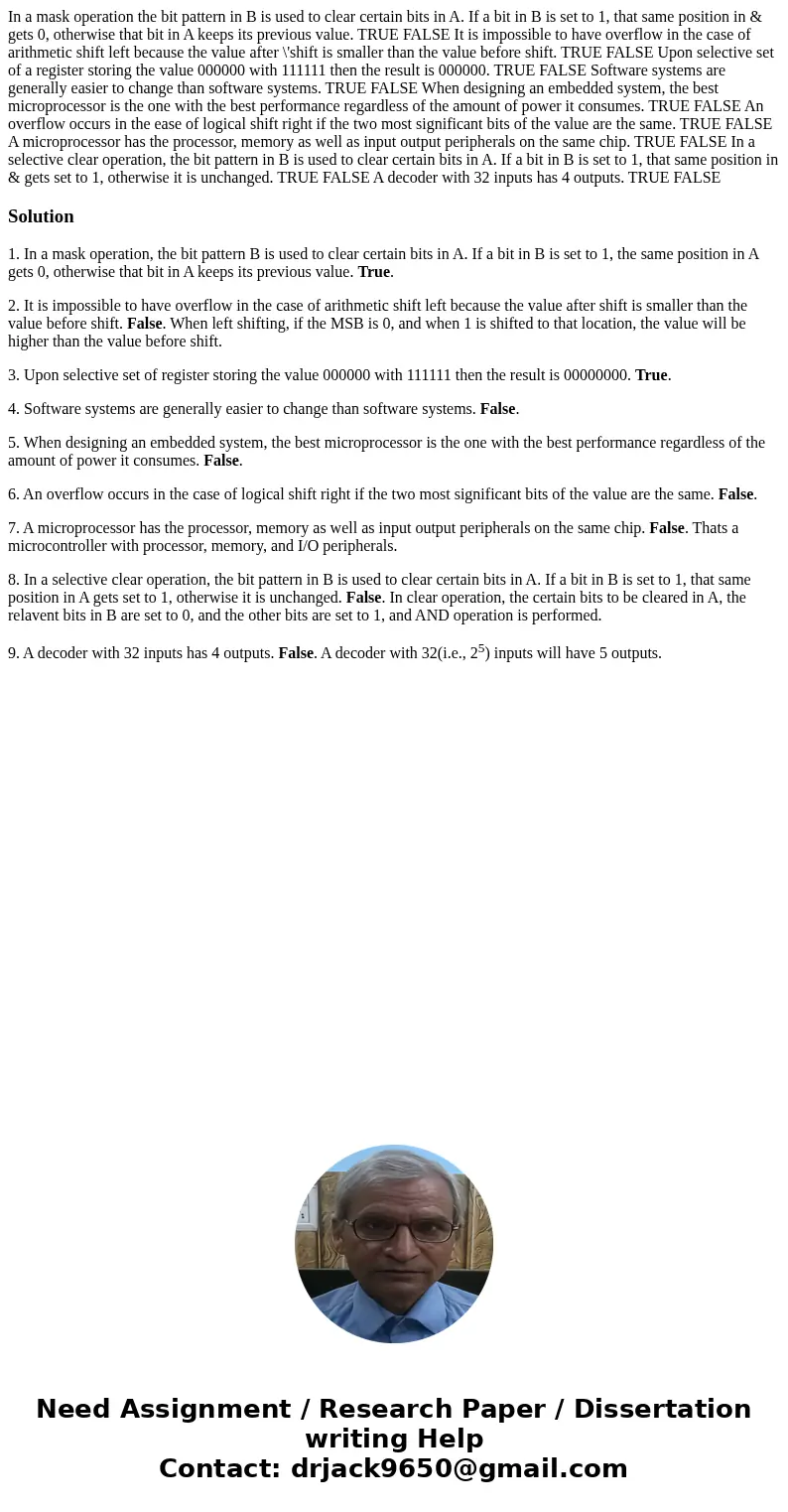In a mask operation the bit pattern in B is used to clear ce
Solution
1. In a mask operation, the bit pattern B is used to clear certain bits in A. If a bit in B is set to 1, the same position in A gets 0, otherwise that bit in A keeps its previous value. True.
2. It is impossible to have overflow in the case of arithmetic shift left because the value after shift is smaller than the value before shift. False. When left shifting, if the MSB is 0, and when 1 is shifted to that location, the value will be higher than the value before shift.
3. Upon selective set of register storing the value 000000 with 111111 then the result is 00000000. True.
4. Software systems are generally easier to change than software systems. False.
5. When designing an embedded system, the best microprocessor is the one with the best performance regardless of the amount of power it consumes. False.
6. An overflow occurs in the case of logical shift right if the two most significant bits of the value are the same. False.
7. A microprocessor has the processor, memory as well as input output peripherals on the same chip. False. Thats a microcontroller with processor, memory, and I/O peripherals.
8. In a selective clear operation, the bit pattern in B is used to clear certain bits in A. If a bit in B is set to 1, that same position in A gets set to 1, otherwise it is unchanged. False. In clear operation, the certain bits to be cleared in A, the relavent bits in B are set to 0, and the other bits are set to 1, and AND operation is performed.
9. A decoder with 32 inputs has 4 outputs. False. A decoder with 32(i.e., 25) inputs will have 5 outputs.

 Homework Sourse
Homework Sourse